Japanese-style Mapo Tofu (Mabo Dofu) is full of flavor but much less spicy than the original Sichuan dish. Even kids can enjoy this family-friendly recipe of ground pork and silken tofu that’s ready in just 30 minutes! {Vegetarian/Vegan Adaptable}
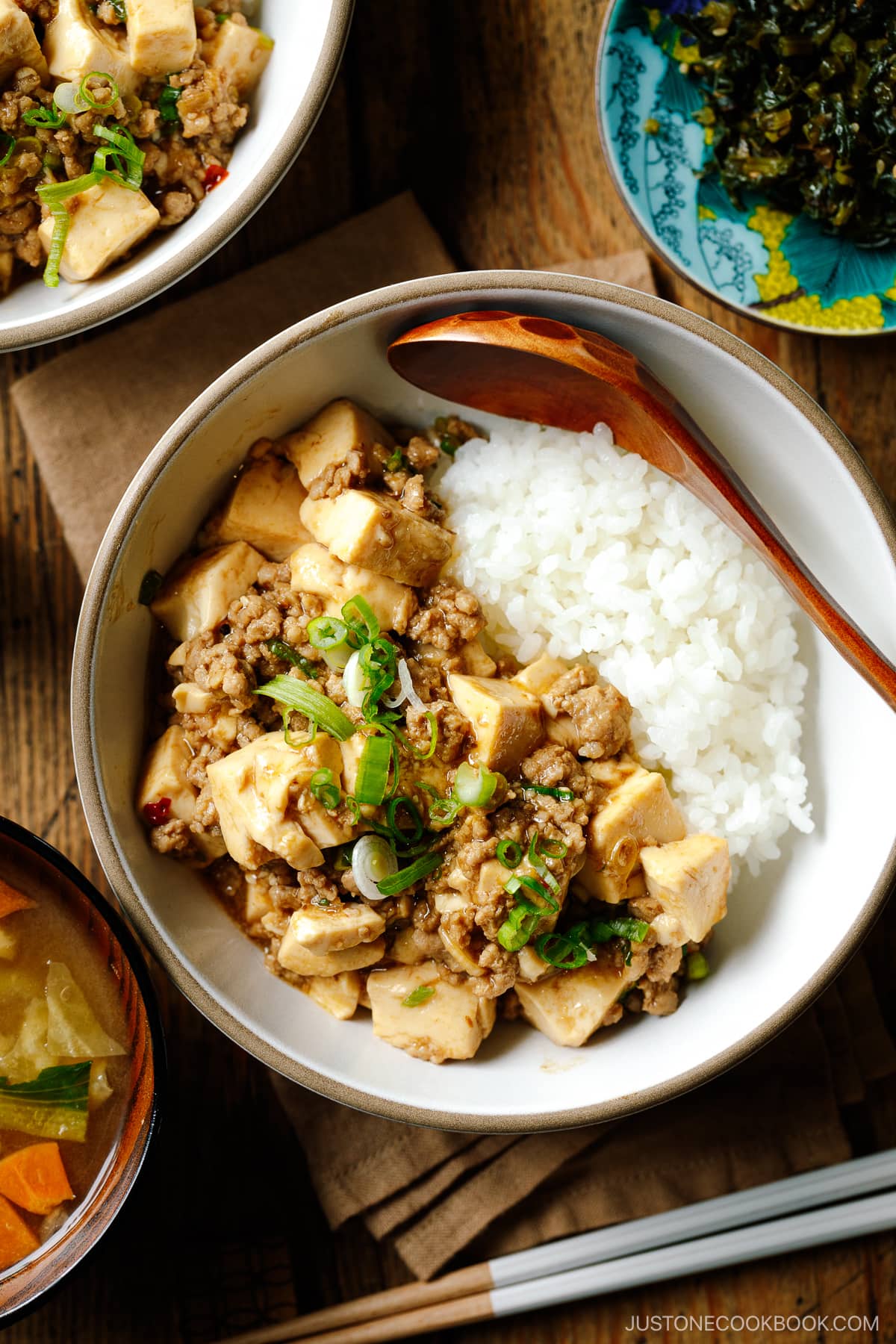
Comforting and full of umami, Japanese-style Mapo Tofu (麻婆豆腐) is easily one of my family’s favorite meals! It is so simple to make, and I love cooking this dish on a hectic weeknight when I have just 30 minutes to spare. I’ll teach you how to make this delicious recipe and serve it either rice-bowl style over fluffy steamed rice or as the main dish in a dinner set.
If you love the Japanese adaptation of Chinese cuisine called Chuka ryori, try my Gyoza, Tan Tan Men, and Japanese Fried Rice recipes next!
What is Mapo Tofu?
Called mabo dofu (麻婆豆腐,マーボー豆腐) in Japanese, mapo tofu was popularized in the 1970s by Chinese-Japanese Chef Chen Kenmin (陳建民) through his Chinese restaurant Shisen Hanten. There, he adapted this dish to suit milder Japanese tastes by notably omitting fiery-red chili and Sichuan peppercorn from the sauce. Thanks to Chef Chen, you’ll find many Chinese-style dishes like mapo tofu, Ebi Chili (Chili prawns エビチリ), and Beef and Bell Pepper Stir-fry (chin-jao ro-su, 青椒肉絲) in Japan’s home-cooking repertoire.
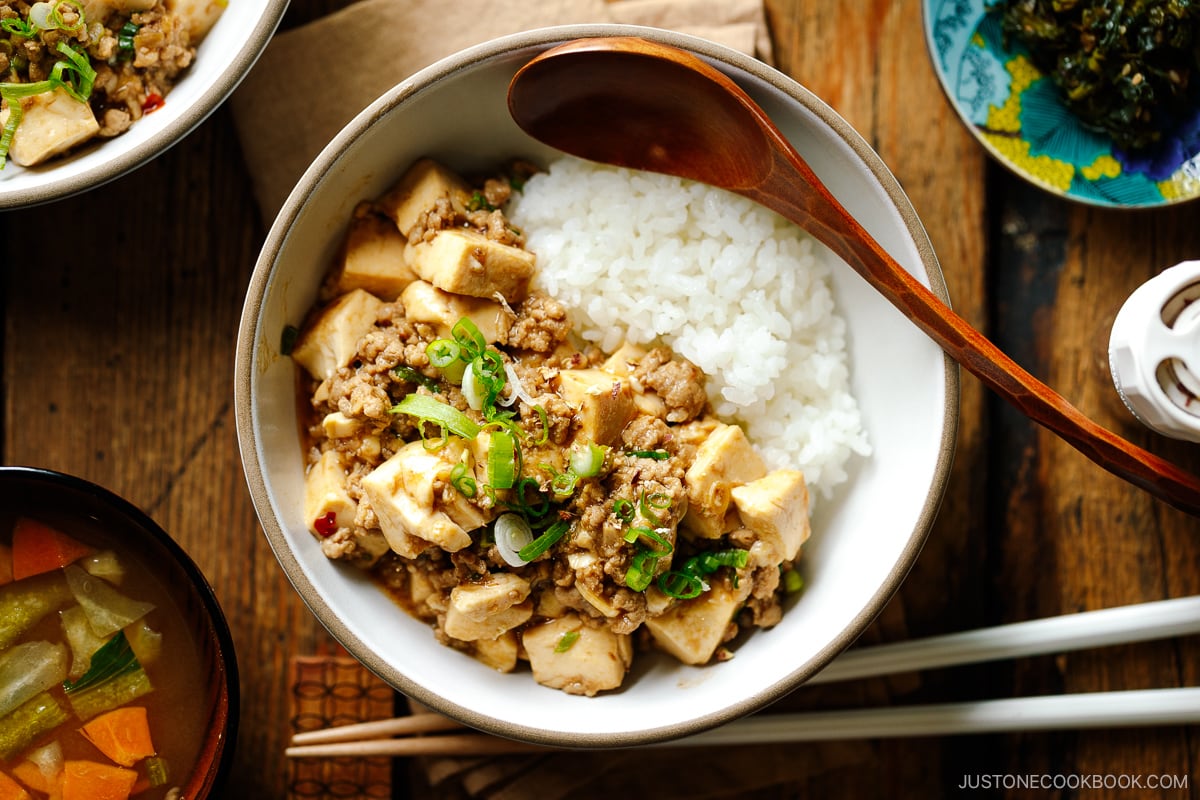
Table of Contents
Why I Love This Recipe
- Perfect for a weeknight dinner – This recipe is ready in just 30 minutes. It’s a lifesaver when I want to get a nutritious and comforting meal on the table but don’t have a lot of time.
- Hearty and healthy! I love that it’s delicious, healthy, and packed with protein. It’s a dish that I feel good feeding my family.
- Family-friendly – The mild heat/spice level means that even children can enjoy eating this dish. I cooked it for my kids from the time they were very young and they love it to this day!
- Easily customizable – Make it less or more spicy, change the ground meat, or make it vegetarian/vegan. I’ll suggest below how to adapt this dish to suit your needs.
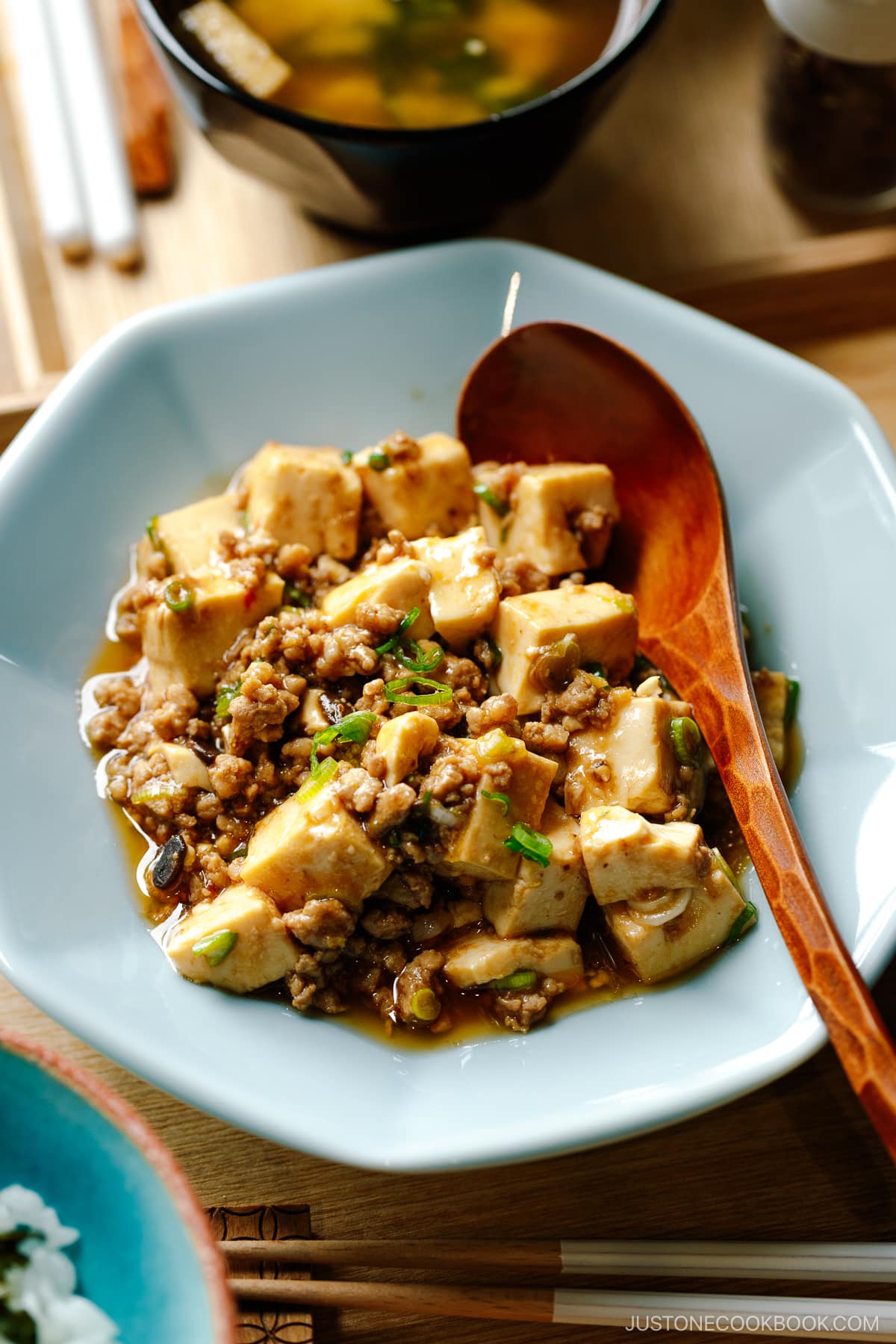
Ingredients for Mapo Tofu
Japanese-style mapo tofu is a very easy dish. This was one of the first recipes my son learned to cook over the summer break as a teen, and now he makes it for himself in college!
- Soft/silken tofu (kinugoshi dofu)
- Ground pork
- Garlic
- Ginger
- Green onions/scallions
- Neutral oil
- Sauce:
- Doubanjiang (spicy or non-spicy broad bean paste) – This fermented seasoning adds an authentic and deeply savory character. Without it, the dish won’t taste the same.
- Oyster sauce
- Miso – unique to Japanese-style mapo tofu
- Soy sauce
- Mirin – unique to Japanese-style mapo tofu
- Toasted sesame oil
- Potato starch or cornstarch
- Water
- Japanese sansho pepper (optional, for serving)
Find the printable recipe with measurements below.
Jump to RecipeSubstitutions
- Silken Tofu: I highly recommend using soft/silken tofu since it adds a smooth and creamy texture to the dish. However, you could use medium tofu if that’s what you have. Please drain the tofu for 15–30 minutes before you start cooking.
- Doubanjiang: I personally use the Taiwanese brands Lian How (岡山) or Ming De (明徳), which have a milder heat level. If you can’t find these brands, some people recommend using gochujang (spicy Korean chili paste) or doenjang (non-spicy Korean soybean paste). I haven’t tried them before, but these will alter the flavor profile. For spicy Sichuan doubanjiang, check Amazon or other online Asian markets. You could also use gluten-free doubanjiang for GF.
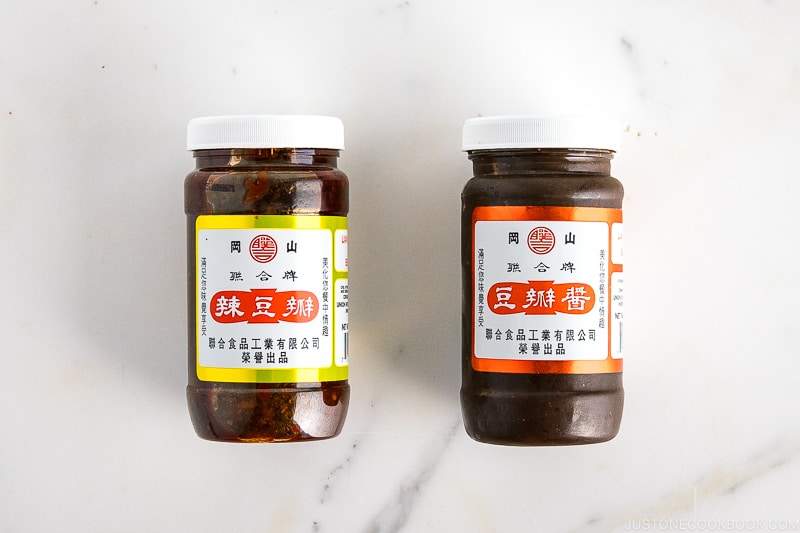
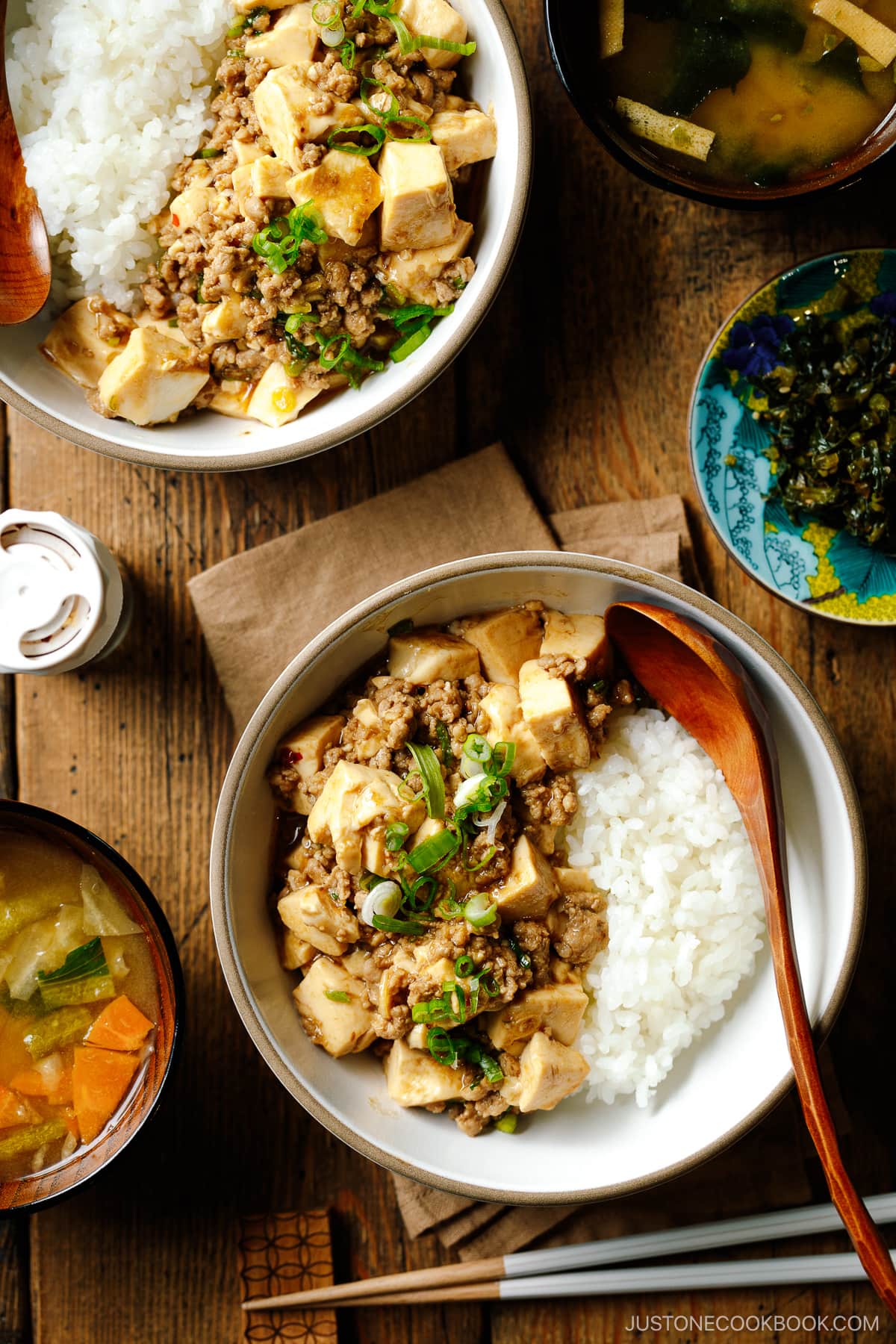
How to Make Mapo Tofu
Preparation
Step 1 – Prep the ingredients before you start cooking. This dish cooks quickly! I strongly recommend that you measure and mix the sauce ingredients and cut the aromatics and tofu ahead of time so everything is ready to go.
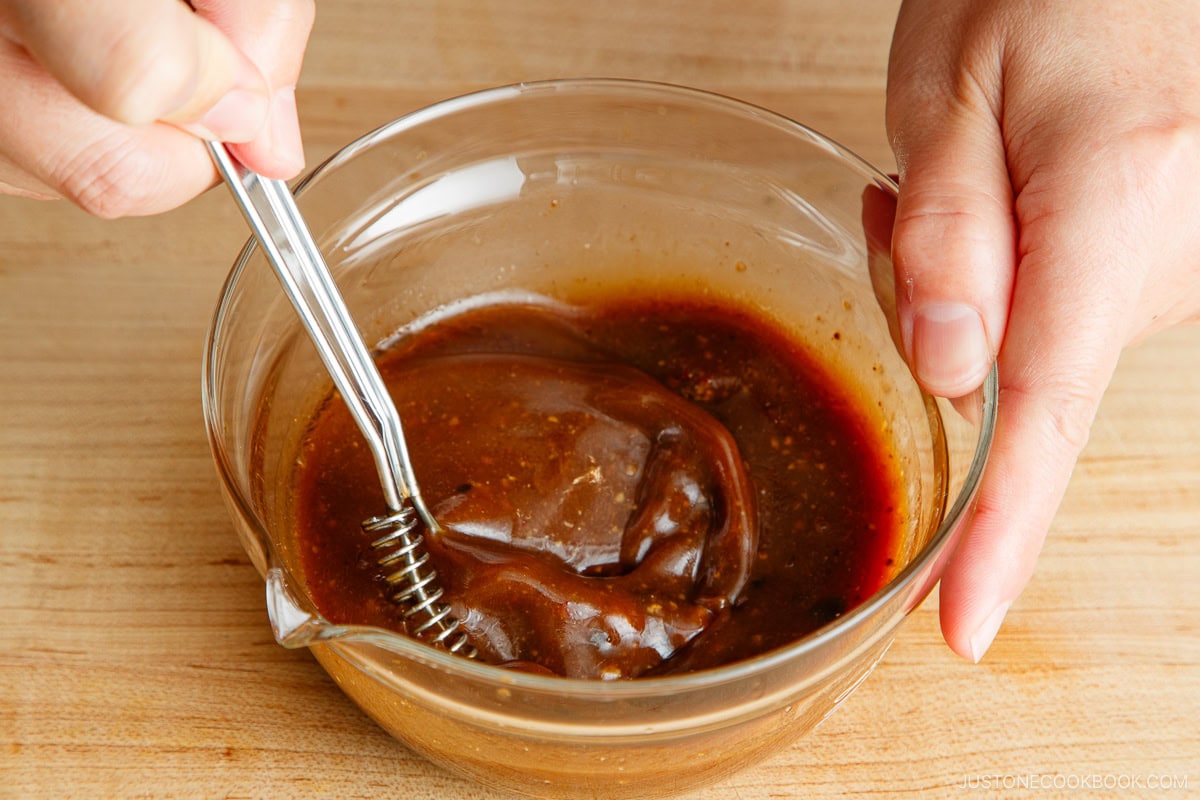
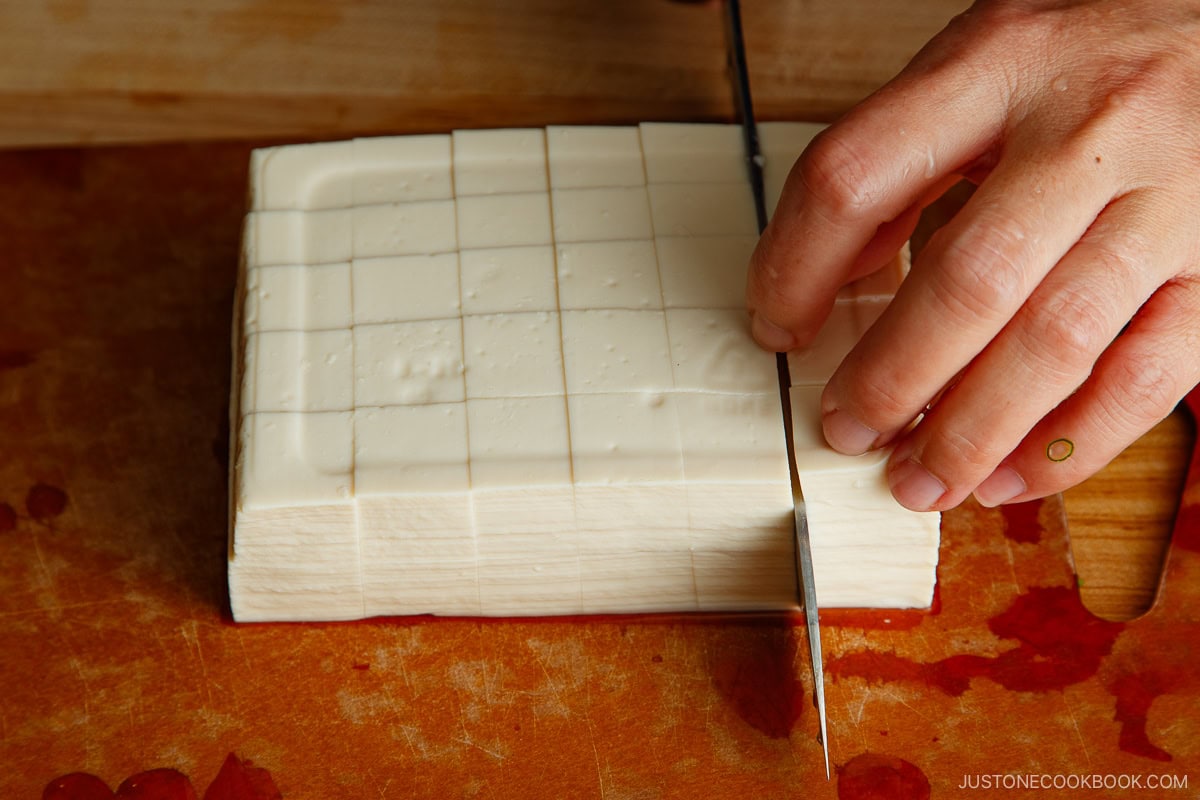
Cooking
Step 2 – Stir-fry the garlic and ginger. Add the garlic and ginger to the hot oil in the preheated wok and sauté until fragrant.
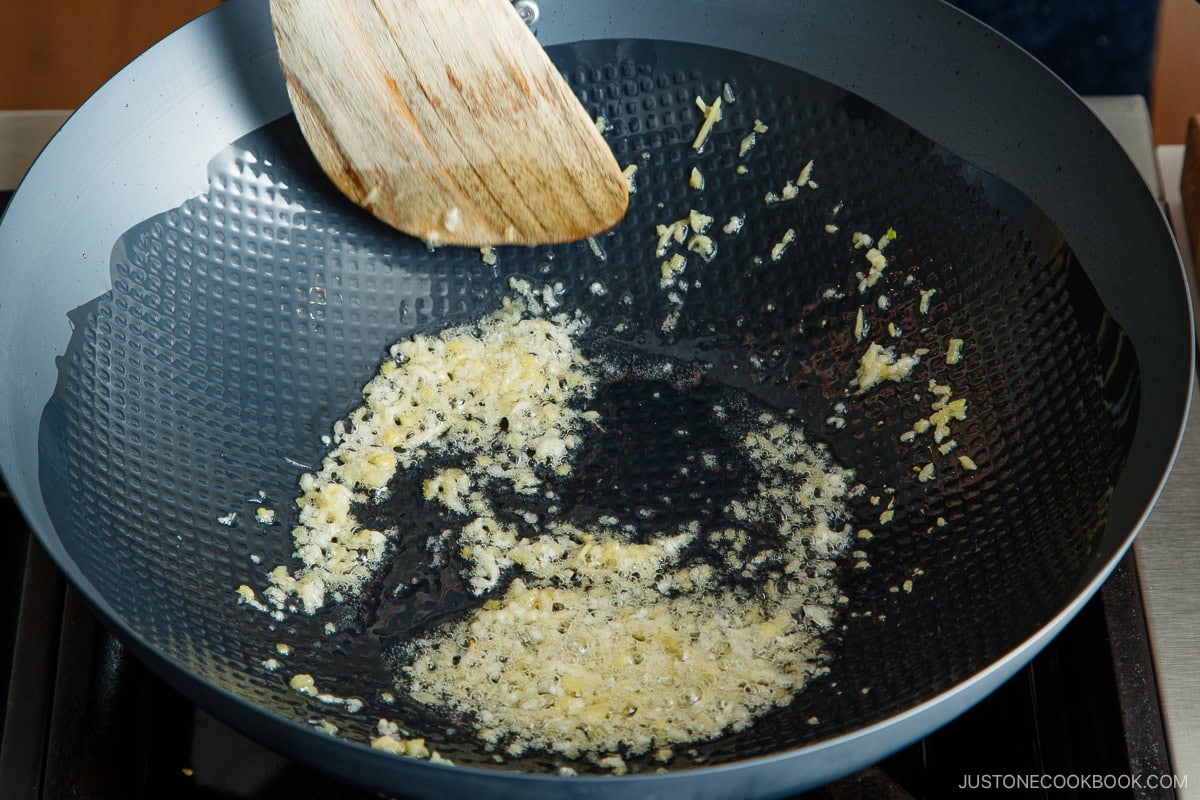
Step 3 – Sauté the ground pork. Add the ground meat to the wok and break up the chunks with a wooden spatula. Cook the meat until it’s no longer pink.
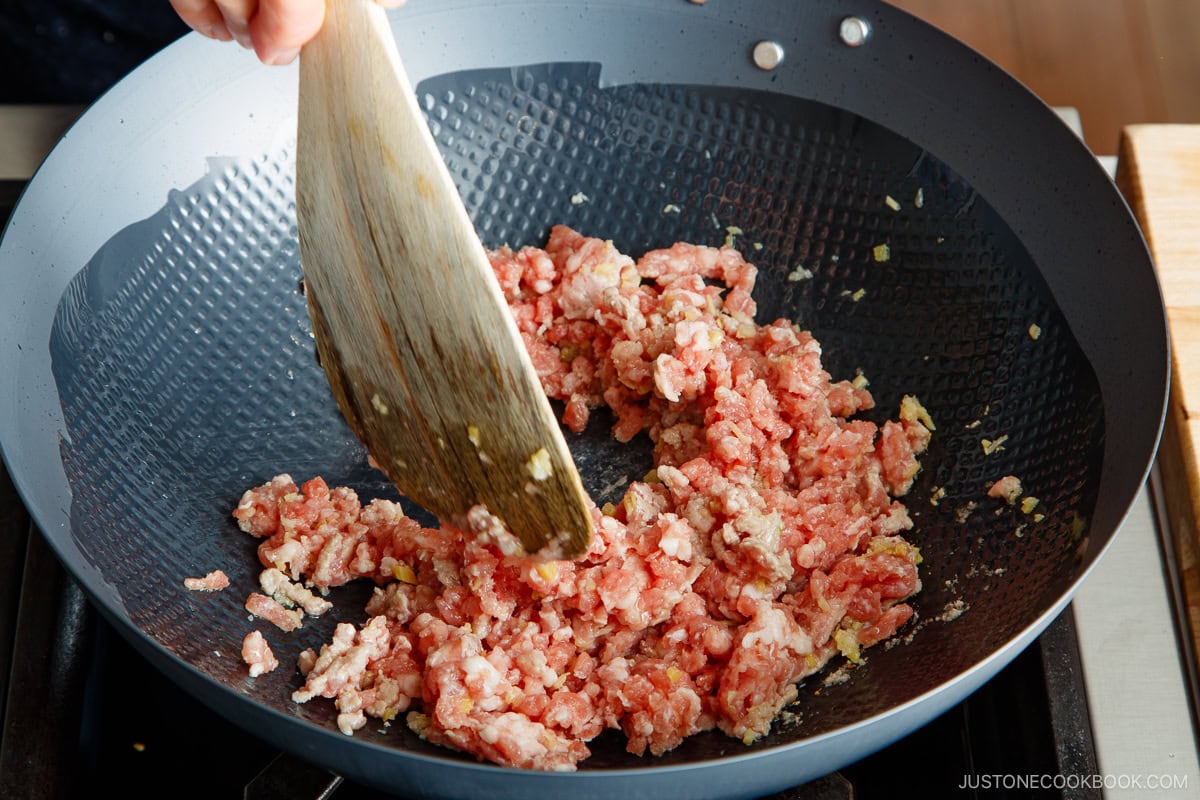
Step 4 – Add the sauce mixture and simmer. Cook and stir until the sauce bubbles and thickens.
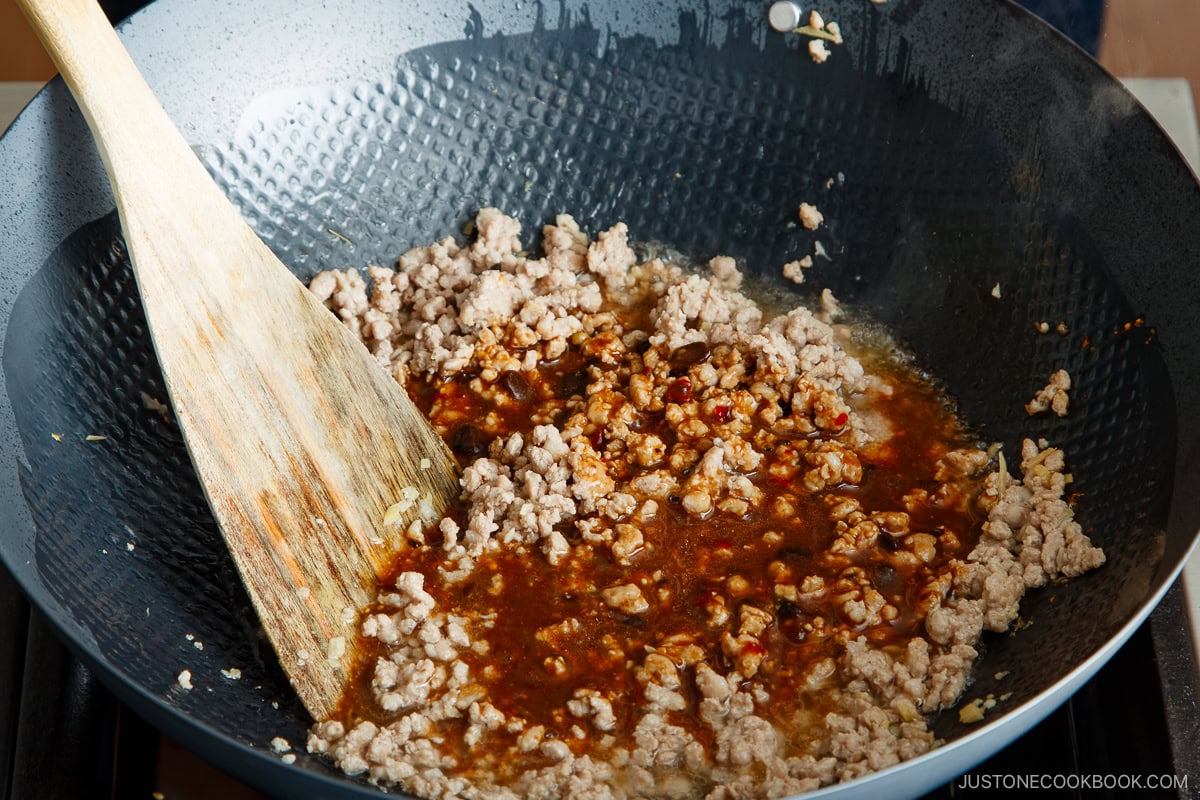
Step 5 – Add the tofu and green onions. Coat the tofu with the sauce until the flavors infuse. Then, add the green onions.
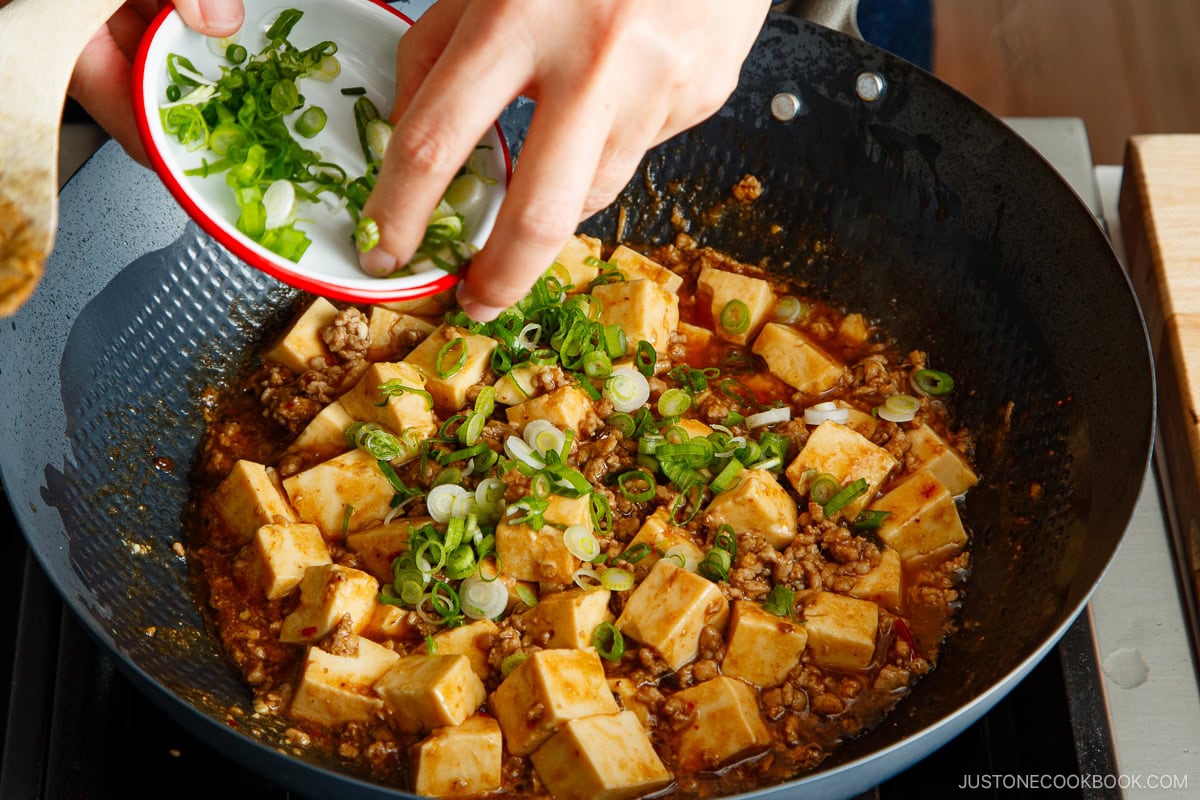
Step 6 – Serve. You can serve the mapo tofu on individual dishes as part of a composed meal, or enjoy it donburi-style like I do spooned over a large bowl of steamed rice.
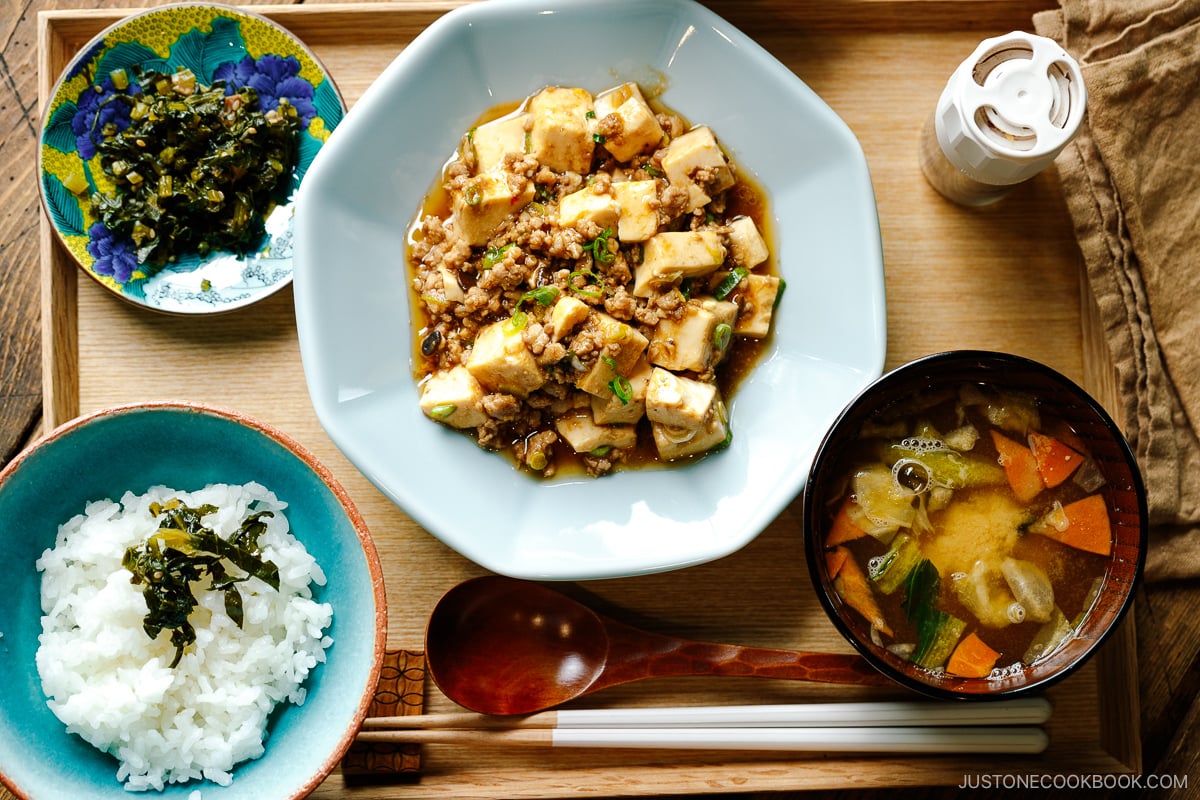
Nami’s Recipe Tips
- Drain the tofu ahead of time for about 15 minutes – This prevents the tofu from releasing moisture into the sauce and diluting it. If you’re like me, you’ll love a savory sauce that’s thick and rich combined with a base of fluffy and steaming hot rice!
- Cut and prepare the ingredients before cooking – This dish cooks fast, and the pan needs constant attention so the ingredients don’t burn. I highly recommend prepping all the ingredients in advance, as there’s no time to step away from the stove once cooking starts. I line up my prepped ingredients next to the stove so I can add them to the pan in quick succession.
- Measure and mix the sauce ingredients ahead of time in a small bowl. I keep the sauce mixture nearby and ready to add to the pan at just the right moment.
- Take care not to burn the garlic and ginger when stir-frying. You don’t want to add a burnt bitter taste to the sauce.
- Carefully stir the tofu – Tofu can easily break and become mushy. Shake the pan to coat the tofu with the sauce, minimizing spatula action.
Variations and Customizations
This mapo tofu recipe is easy to adapt to your preferences and needs. Here are a few of my suggestions for how to vary this delicious dish.
- Change up the ground meat. In Japan, we always use ground pork. However, you can use ground turkey, ground chicken, or ground beef.
- Make it vegetarian/vegan. Instead of meat, use finely diced fresh or dried (rehydrated) shiitake mushrooms. Use vegetarian stir-fry sauce in place of oyster sauce.
- Adjust the heat level. Add more or less doubanjiang, use the Taiwanese non-spicy version, or turn up the heat with a few teaspoons or more of fiery-red Sichuan doubanjiang! For less heat, I recommend using 1½ Tbsp non-spicy doubanjiang and 1 Tbsp spicy la doubanjiang. If you like it slightly spicier, sprinkle la-yu (Japanese chili oil).
- “College-meal” version. My son made this 10 Minute Meal – Mapo Tofu recipe in an electric pot at his dorm kitchen, and his friends loved it! It’s super quick and easy to make.
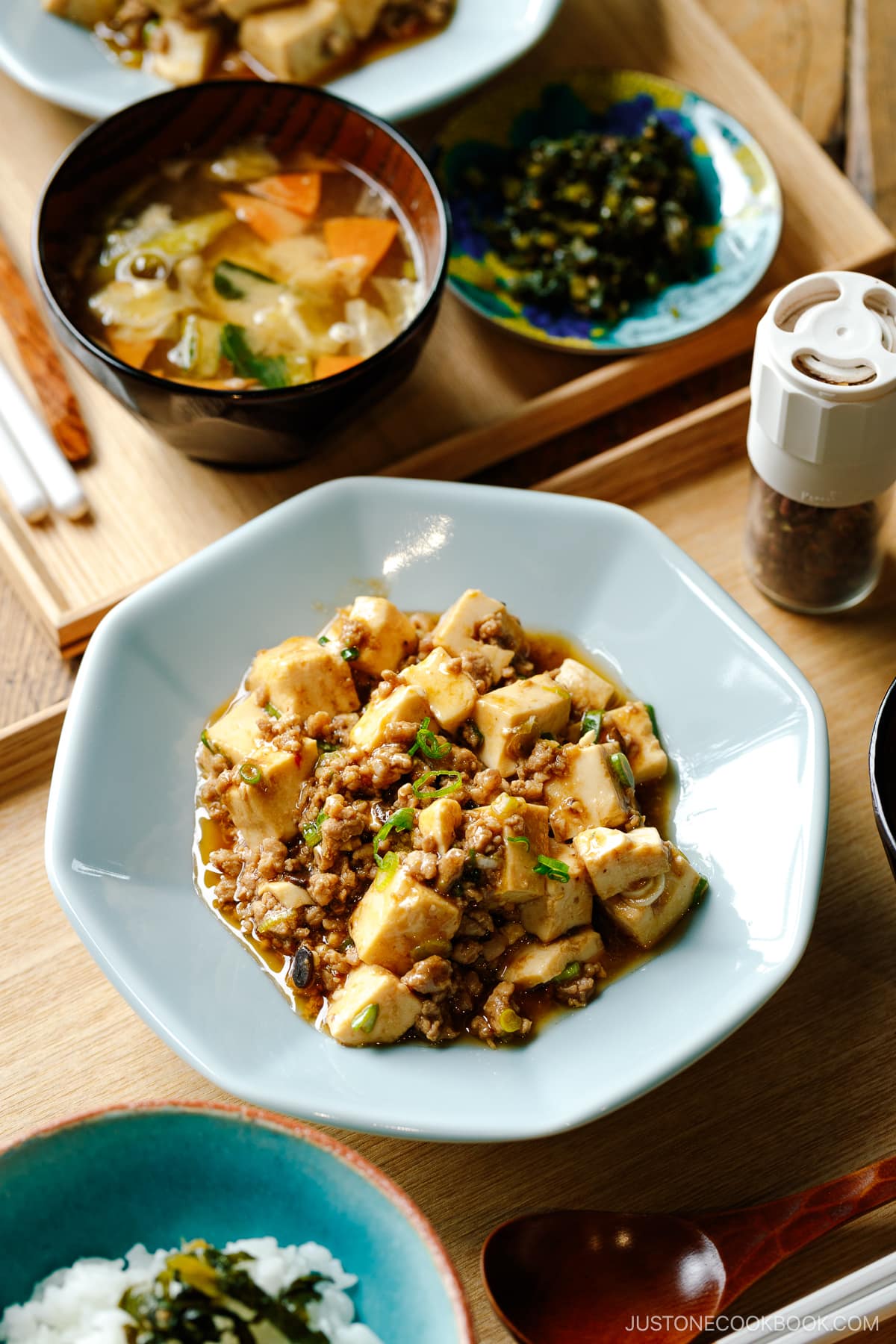
What to Serve with Mapo Tofu
- As a rice bowl – If you serve it donburi-style (mapo tofu over rice), I suggest adding Homemade Miso Soup and a simple veggie side like Japanese Cucumber Salad to make it a complete meal.
- As the main dish of a traditional ichiju sansai meal – For a Japanese-style “One Soup Three Dishes” meal, serve the rice and mapo tofu in separate dishes, then add a miso soup, two side dishes, and a small dish of Japanese pickles.
Storage and Reheating Tips
To store: Once the mapo tofu is cooled to room temperature, store the leftovers in a glass airtight container in the refrigerator for up to 3 days. I do not recommend freezing this dish as tofu changes its texture once frozen.
To reheat: Gently warm up in a saucepan over medium-low heat until thoroughly heated.
Frequently Asked Questions
Wrap a paper towel around the silken tofu and set it on a plate or tray to drain the moisture for about 15 minutes. Be gentle when handling it since silken tofu is very fragile. Do not press the tofu because it will crumble easily.
More Chuka Ryori Recipes
If you love this Mapo Tofu, you’re in for a treat with these other irresistible Japanese-style Chinese recipes.
- Chashu (Braised Pork Belly)
- Hiyashi Chuka (Cold Ramen)
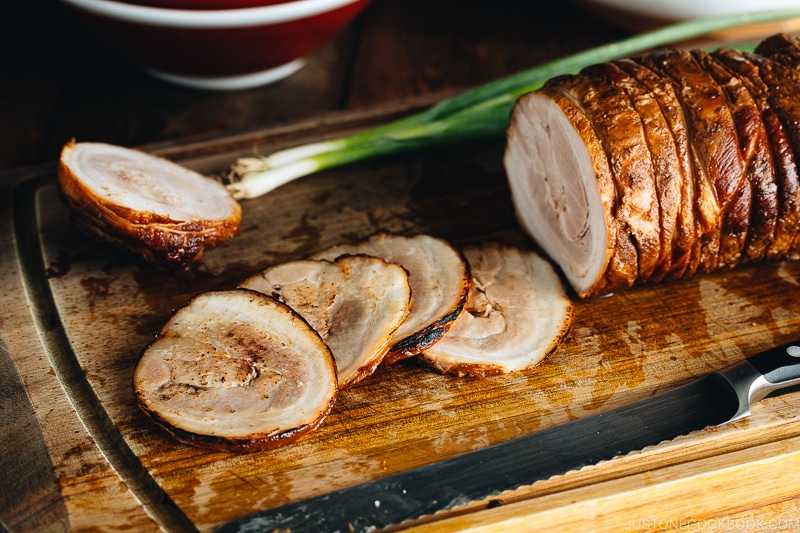
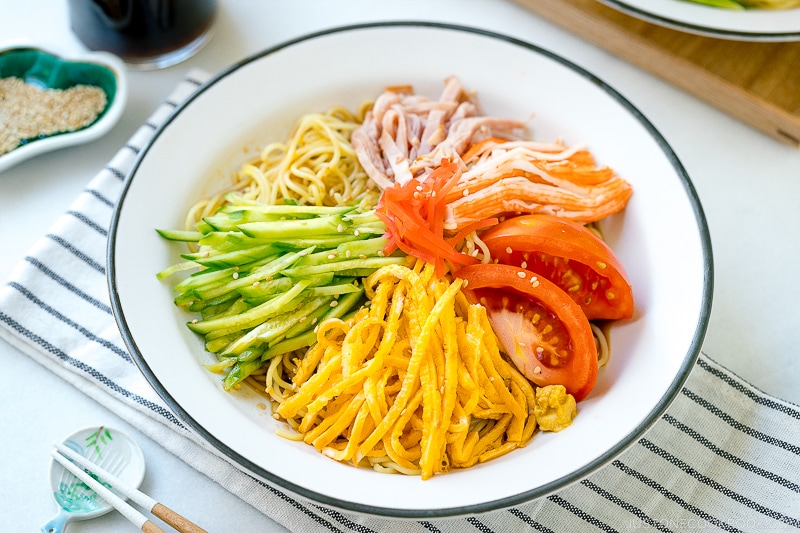

Mapo Tofu (Mabo Dofu)
Video
Ingredients
For the Sauce
- 2½ Tbsp doubanjiang (spicy chili bean paste) (for less spicy, use 1½ Tbsp non-spicy doubanjiang and 1 Tbsp spicy la doubanjiang; read the blog post for details; use gluten-free doubanjiang for GF)
- 1 Tbsp oyster sauce (use Lee Kum Kee Vegetarian Stir-Fry Sauce for vegan/vegetarian or if you‘re allergic to shellfish)
- 1 Tbsp miso
- ½ Tbsp soy sauce
- 2 Tbsp mirin
- 1 tsp toasted sesame oil
- 1 tsp potato starch or cornstarch
- 4 Tbsp water
For the Mapo Tofu
- 2 cloves garlic
- 1 Tbsp ginger (minced)
- 2 green onions/scallions
- 14 oz soft/silken tofu (kinugoshi dofu) (drained for 15–30 minutes)
- 1 Tbsp neutral oil
- ½ lb ground pork (or your choice of meat; use mushrooms or veggies for vegan/vegetarian)
For Serving
- Japanese sansho pepper (optional)
Instructions
- Gather all the ingredients. Here, I use a combination of non-spicy doubanjiang (dark brown color) and spicy la doubanjiang (deep red color).
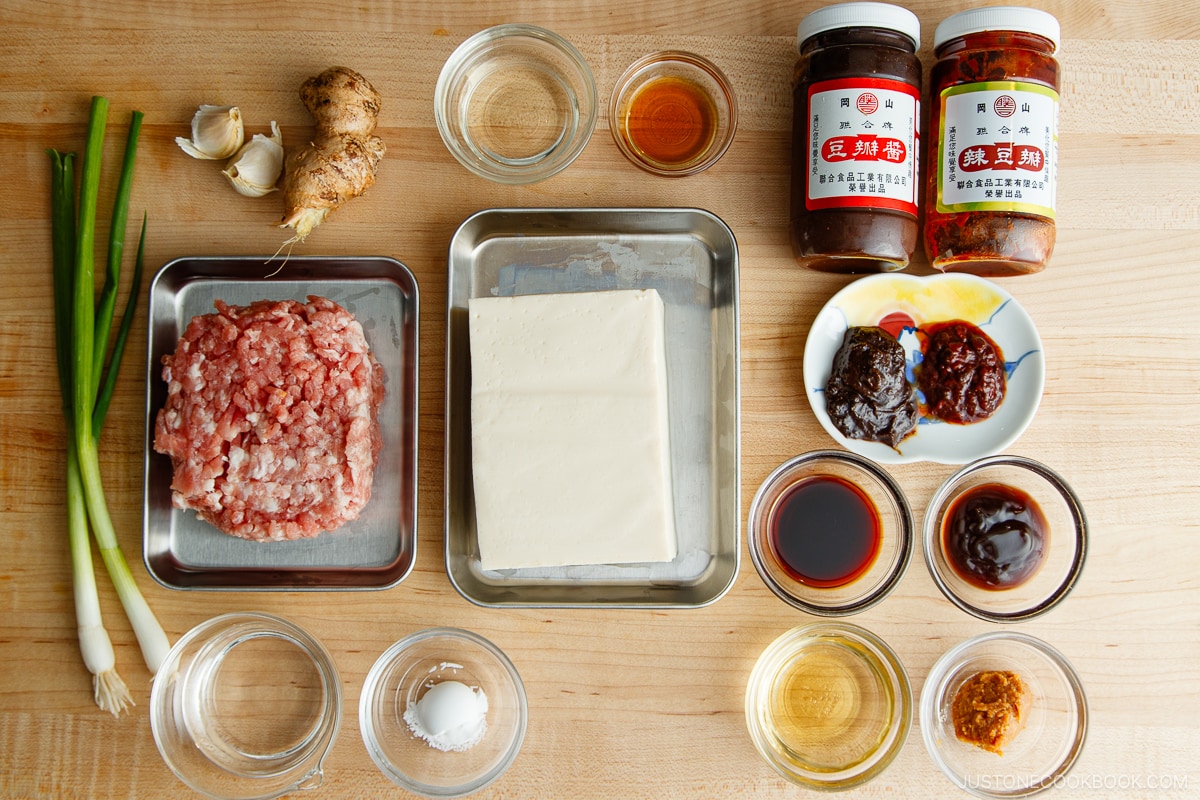
- Combine the sauce ingredients. To a small bowl, add 2½ Tbsp doubanjiang (spicy chili bean paste), 1 Tbsp oyster sauce, 1 Tbsp miso, ½ Tbsp soy sauce, 2 Tbsp mirin, 1 tsp toasted sesame oil, 1 tsp potato starch or cornstarch, and 4 Tbsp water. Mix well together with a whisk.
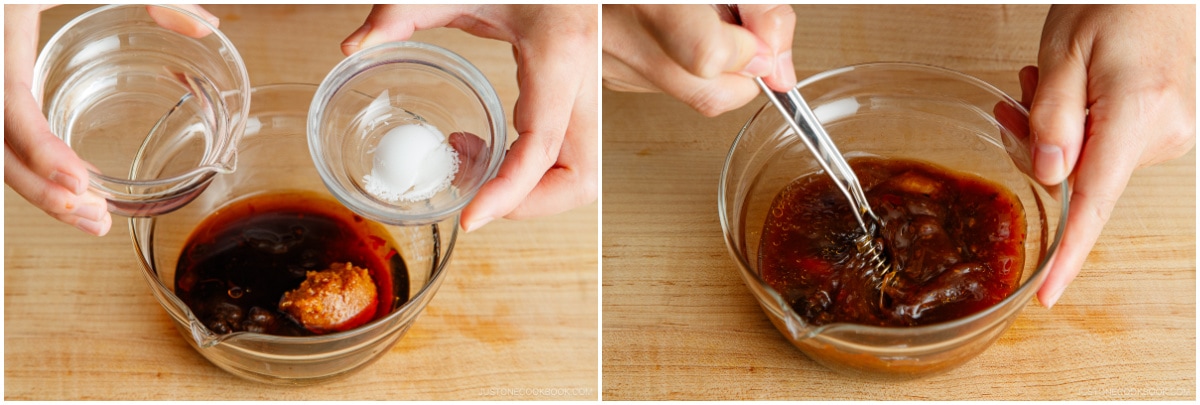
- Finely mince 2 cloves garlic (I use a garlic press). Thinly peel off the ginger skin with a sharp knife or scrape it off with a spoon.

- Cut the ginger into thin slices, then into thin julienne strips. Mince the strips and measure 1 Tbsp ginger.

- Slice 2 green onions/scallions crosswise into thin rounds. Set aside some for garnish when serving.
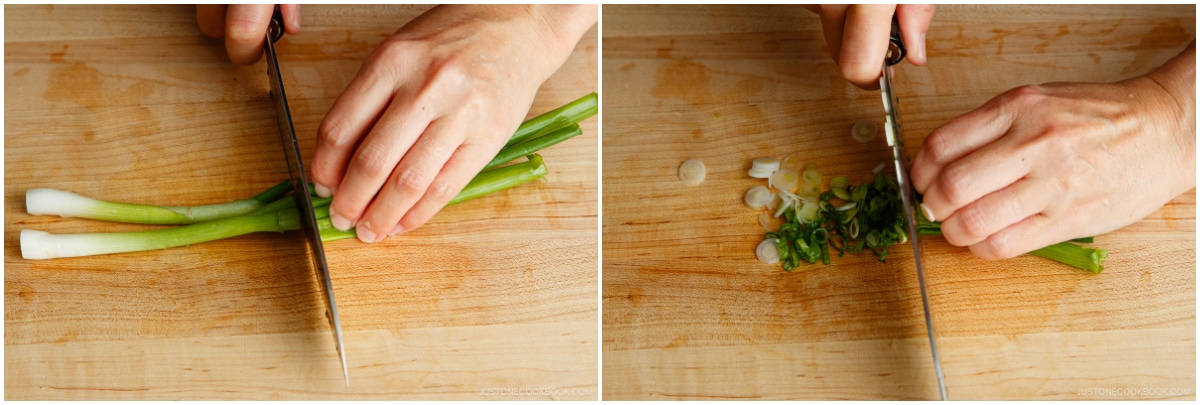
- Drain 14 oz soft/silken tofu (kinugoshi dofu) and cut into ¾-inch (2-cm) cubes.
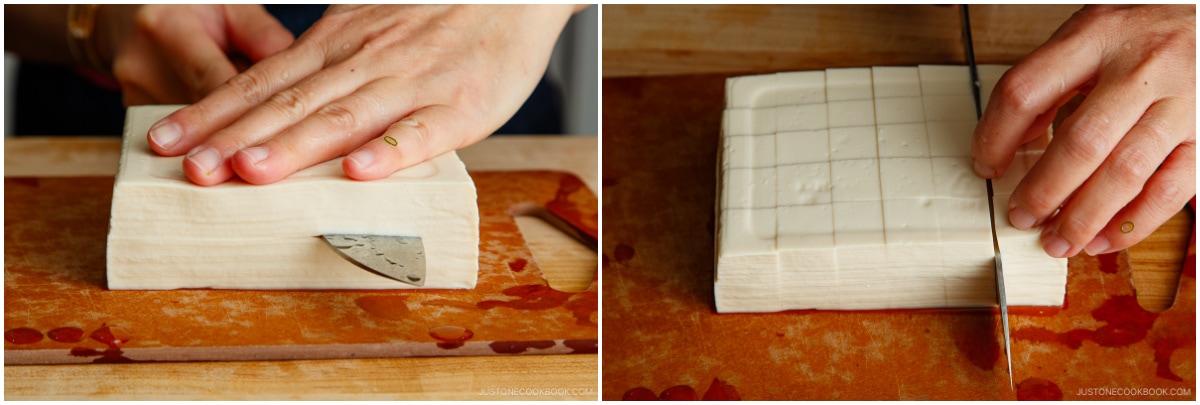
To Cook the Mapo Tofu
- Heat a wok or large frying pan on medium heat. Add 1 Tbsp neutral oil to the hot pan. Then, add the garlic and ginger to the hot oil.
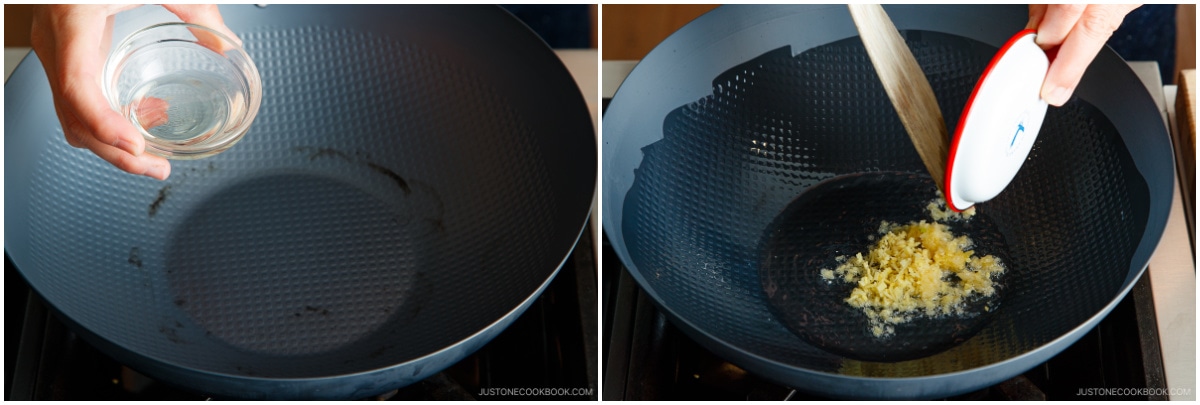
- Sauté the aromatics until fragrant, making sure they don‘t burn. Then, add ½ lb ground pork to the wok.
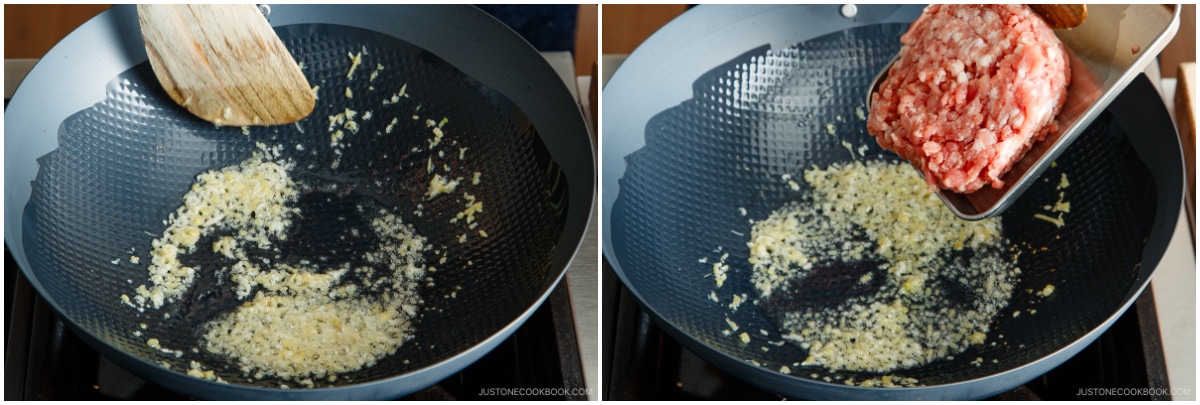
- Cook the pork, breaking up the chunks with a spatula or wooden spoon, until the meat is no longer pink.
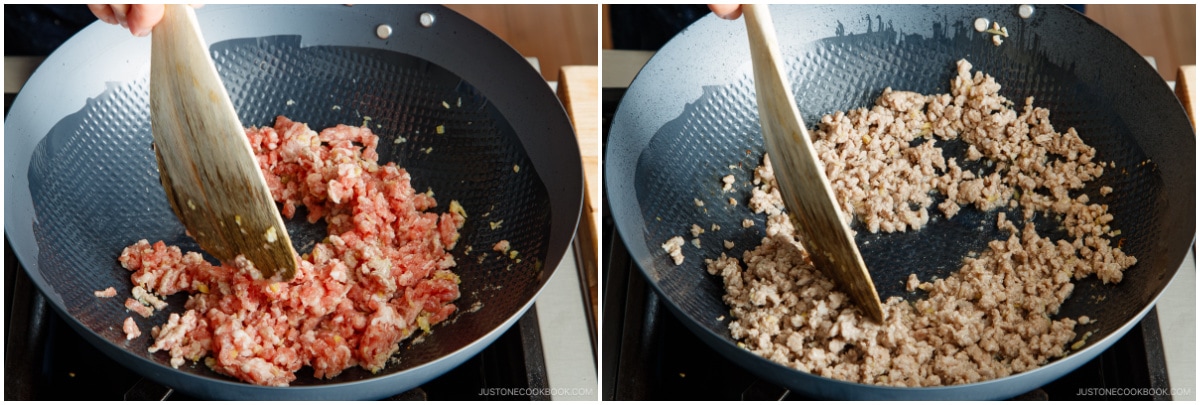
- Give the sauce mixture a final stir, then add it to the wok. Stir thoroughly as you bring the sauce to a simmer.

- Add the tofu and gently coat it with the sauce. Stir frequently, without mashing the tofu, until it is heated through.
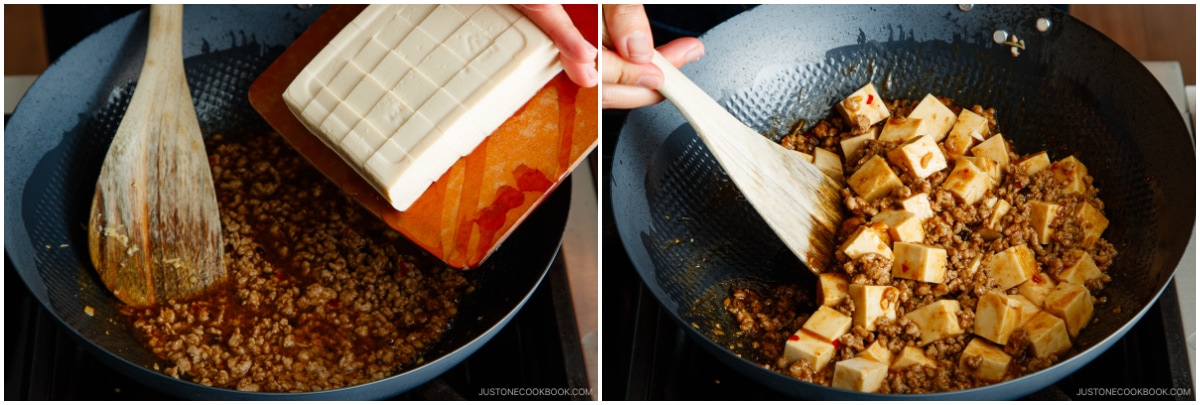
- Add most of the green onions, reserving some for garnish. Stir to incorporate just before taking the pan off the heat.
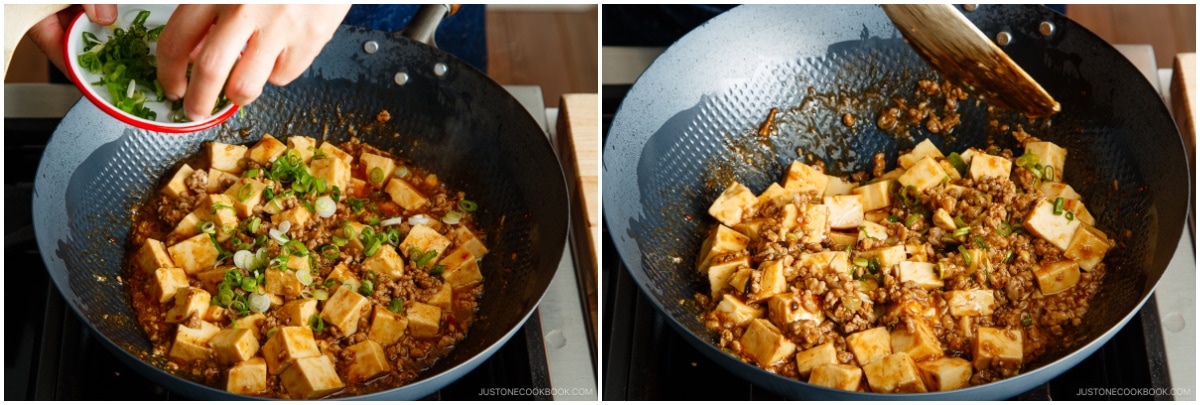
To Serve
- Sprinkle with optional Japanese sansho pepper and serve immediately in individual bowls. I like to garnish it with sliced green onions.
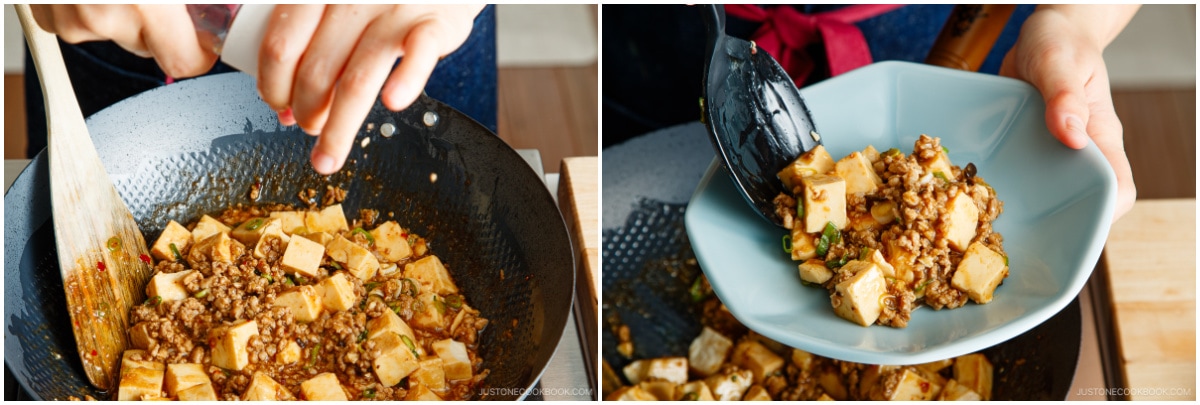
- You can enjoy Mapo Tofu as the main dish in an ichiju sansai meal. You could also serve it over steamed rice donburi-style for a one-bowl meal.
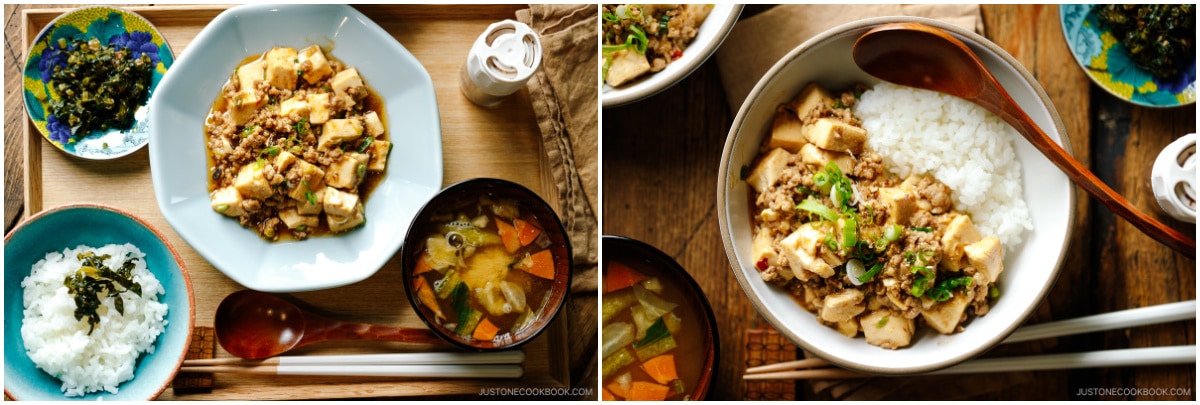
To Store
- You can keep the leftovers in an airtight container and store in the refrigerator for up to 3 days. I do not recommend freezing this dish as tofu changes its texture once frozen.
Nutrition
Editor’s Note: The post was originally published on January 29, 2011. The video was added to the post on May 6, 2016. The post was updated with new images on February 4, 2024, and republished with more helpful information on December 3, 2024.

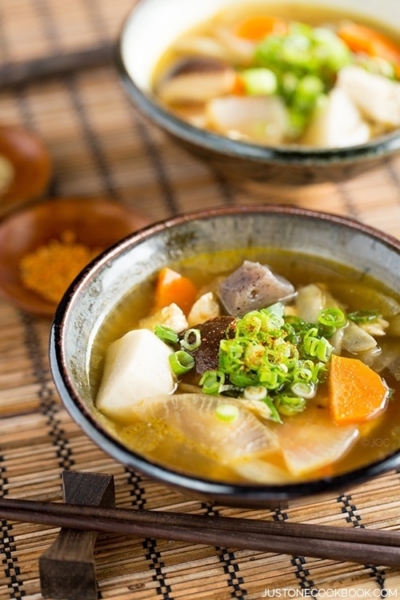
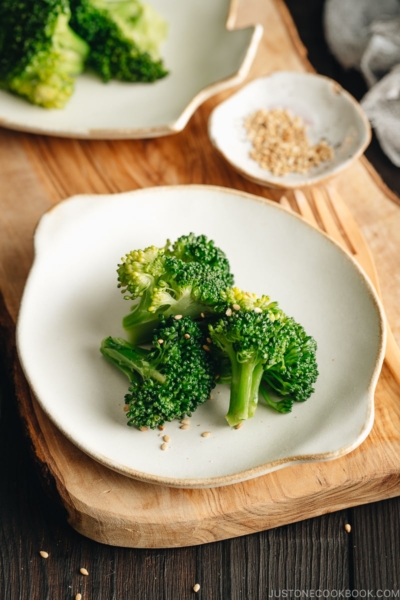
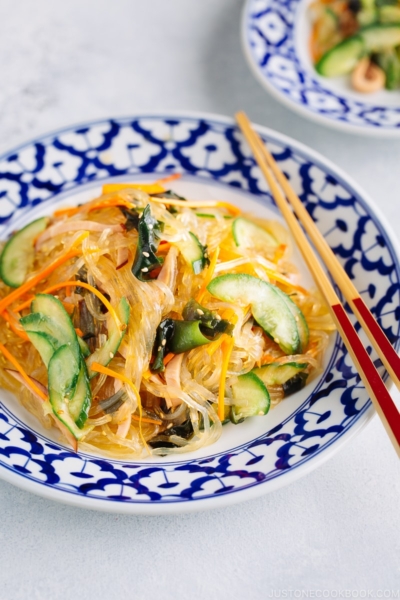
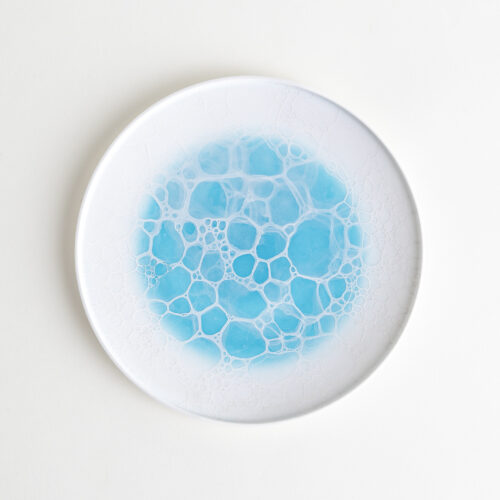
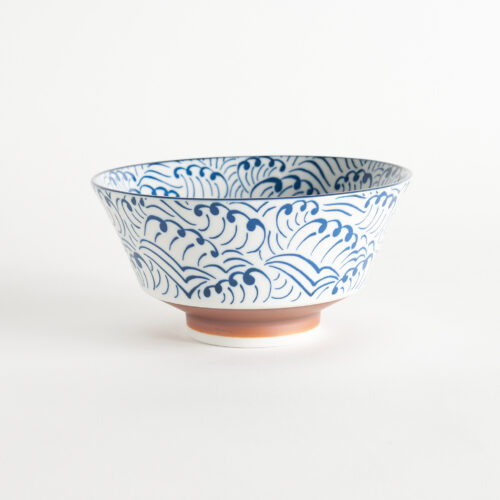
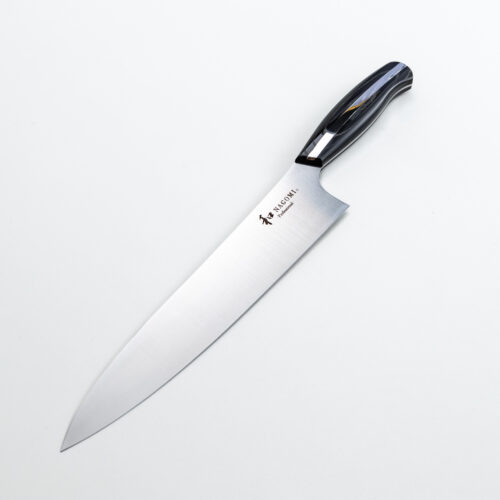
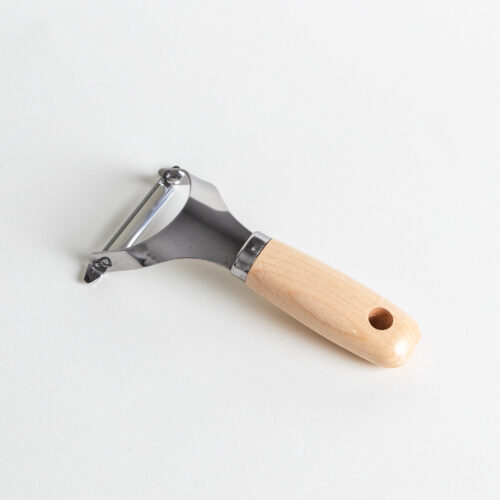

This is one of my favourite dishes to make 🙂 I always follow your recipe, except I use more meat because of the packaging size, and also more ladoubanjan and soy sauce. Every time I serve this to people they will want seconds.
Hi Aino! I’m so happy to hear you enjoy this recipe! Thank you so much for your kind feedback. 🙂
Hi Nami,
I know this is an older recipe, but I absolutely love your recipes! I am a huge fan of mapo tofu, and I have enjoyed your recipe the most. I was curious how much of the sauce you include when you add the bean sauce? Or perhaps I’m buying the wrong ingredient! The only ones I can find around me have quite a bit of liquid-y sauce, and every time I debate how much of the sauce vs only bean paste to include.
Thanks so much!
Hi Emi! Thank you so much for using my recipes! Mr. JOC and our son LOVES this mapo tofu recipe and I always come to this recipe to make every single mapo tofu I make at home. 🙂
Hm, interesting question. I usually stick my spoon in, and scoop up. I don’t pay too much attention to liquid vs paste itself. I won’t pick up just the liquid, or vice versa. I make sure I pick up enough paste part. Sometimes it is chunkier than normal too. But remember, tofu has so much moisture content that it also dilute the mapo tofu. So it’s not just the sauce, but tofu affects the overall outcome too. 🙂 Sorry I don’t think my response is very helpful…
Cooked this last night! It was fantastic – so flavorful, and refreshing with the ginger. Wish I could upload a picture to show you how it turned out! Thanks for this quick/easy/delicious recipe that’ll definitely be a constant in our rotation.
Hi Laura! I’m so happy you enjoyed cooking this recipe! Yeah, sorry I don’t have that function here. Most of JOC friends upload their pictures with hashtag #justonecookbook on Instagram, Facebook, and Twitter. I regularly check these hashtag Thank you for trying my recipe!
Hi, I really love ur recipes. Can I omit the miso in this recipe?
Hi BB! I prefer that it’s in, but if you don’t want to, that’s okay too. I hope it will still taste good. 🙂
Hi! I just tried this recipe but with what I had on hand and it turned out great! I used LKK Black Bean Garlic Sauce and LKK Chili Garlic Sauce. I am surprised to see miso in the seasoning! I’ll have to buy some and the LKK Chili Bean Paste and try this again. So much more satisfying than buying the Cook Do packets. Thanks Nami!
I used to use Cook Do packets back in college days, but this homemade recipe is far better than those convenient packages. The effort is almost same as package one, so it’s so worth making it from scratch! Thank you for trying this recipe! 🙂
I’m in Singapore and not sure if I’ll be able to find broad bean paste. Can I substitute it with black bean paste instead?
Hi Alice! They are very different. The brand I use is from Taiwan, I think, but can you find 豆板醤 without chili in it (so it’s not red, more brown)? I’m sure you can find the spicy version chili bean paste 豆板醤 in Singapore to make Chinese dishes. 🙂
I’m looking forward to having this tomorrow, looks lovely.
I could only find the chilli bean paste in the store, I suppose it’s fine to make this using only that one?
Hi Emy! Sure, as long as you’re okay with spice. 🙂 Mr. JOC will love using only chili bean paste, but it’s a bit too spicy for the kids so I combine the two. 🙂
I guess I will just have to try and see. 🙂 Thanks!
Hi Nami! Can I use black bean garlic sauce instead of chili bean sauce? Thanks!
Hi Janice! Unfortunately, no, mapo tofu’s main flavor comes from doubanjiang or la doubanjiang (chili bean sauce). Black bean garlic sauce is different, and it’ll taste different. 🙂
Ok, thank you for your reply, I just realized I also have the Lian How brand bean sauce in my pantry! Can’t wait to try your recipe!
Cool! Hope you enjoy! 🙂
This is a delicious recipe. I’ve tried it with only Doubanjiang and only Ladoubanjiang, and the ldoubanjiang is definitely spicy, in a slow burn way. A mix of both works well, as you suggested, though just Doubanjiang was nice when I didn’t want this to be spicy. The cheap supermarket Mirin I have has a lot of salt, so the dish wound up being too salty. I modified this recipe to use Chinese Rice Cooking wine and 1 tsp of sugar and it worked well. I suspect I could have kept the mirin and dropped the soy sauce as well.
Hi Joe! Thank you for your kind words! We started with doubanjiang as my kids couldn’t eat any spice (and me too). After being exposed to some spice, we are now okay with half and half. Only problem for me is that I tend to eat more rice to recover from the burn. 🙂
Yeah, I prefer not to use those mirin-like condiment too. I think it’s best with your method than dropping soy sauce. Also, depends on the miso brand and miso type, salt content is VERY different. Always tricky to include miso as it varies so much. 🙂
I wonder if I can add a little bit of eggplant chopped in this dish too or is it overkill?
Hi K. Dillon! Sure, you can. Eggplant absorbs lots of oil, so keep that in mind. You might want to cook the eggplant first take it out, cook the meat, and add the eggplant back in. So you won’t be stir frying eggplant for a long time and break the eggplant texture… 🙂
I love this recipe! It’s very delicious.
I previously saw tip elsewhere to poach the tofu before adding to the recipe. It’s a fabulous tip that goes with this very delicious recipe. This is now one of my regular recipes. Thank you Nami!
Hi Treena! Thank you for trying this recipe and I’m so happy to hear you like it. Thank you for sharing the tip on poaching the tofu! I’ll definitely give it a try! 🙂 xo
Thx Nami!
Seems amazing! Going to try this next week :-).
Are you also doing “grilled” tofu? By grilled I mean some sort of slightly breaded tofu cubes (texture was a little hard outside and mellow (standard for tofu) inside). The mother of one of my friends who is Cambodian was doing this and it was excellent but I can’t find a recipe to reproduce it :-(.
Have a nice weekend!
Hi Bastien! I hope you enjoy this recipe! You’re probably talking about Agedashi Tofu:
https://www.justonecookbook.com/agedashi-tofu-2/
Hope you enjoy! 🙂
Delicious! I added pickled Chinese vegetables and 6 ground Sichuan peppercorns and it was as amazing!
Hi Maw! Ohh that sounds delicious! Thank you for trying this recipe! 🙂
HI Nami, I made your recipe for dinner tonight (for the second time) and my family enjoyed it very much. Easy steps for a weeknight meal, but so flavorful and delicious! I did have a question about one step in the recipe. After I cooked the pork, I noticed there was quite a bit of oil and liquid in the pan. I drained it before adding the sauce, but do you keep it in? Also are there any side dishes that go well with this bowl meal? I served Asparagus tonight, but wondered if there was something else that goes well… Thank you so much for your website! Love the videos and photos, too.
Hi Anna! I’m so happy to hear you tried this recipe and your family enjoyed it! Thanks so much for your kind feedback! Depends on how fat the pork is too. I use 75% so it’s pretty oily for me, but I don’t remove the liquid as it’s part of deliciousness. But if you want to keep it healthy, then you can use kitchen towel to absorb and toss. As for side dishes, since it has meat and tofu, I usually serve stir fried veggies or salad on the side. Nothing fancy… salad, if I can make it ahead of time, and stir fry veggies if I have no time and have to cook two dishes at the same time. 🙂 Hope that helps!
This is another recipe that I will add to my weekly rotation. I love to eat it with raw or steamed vegetables. Thank you Nami for sharing the recipe.
Hi Gwen! I’m happy to hear you want to try this recipe. Hope you’ll enjoy it. Serving with vegetables sounds wonderful. Today some JOC reader told me she served it with cauliflower rice and loved it. 🙂